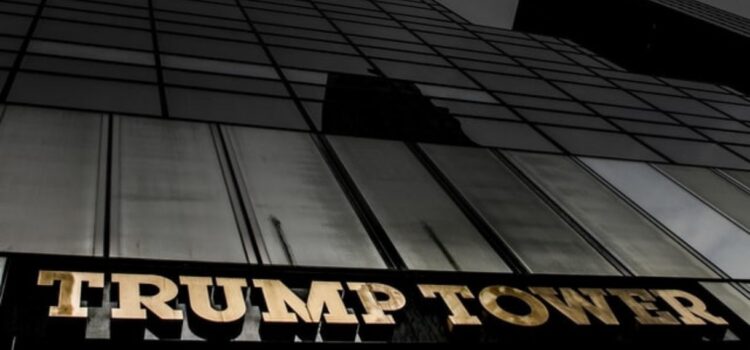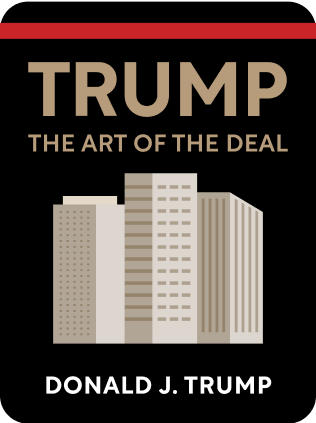

This article is an excerpt from the Shortform book guide to "The Art of the Deal" by Donald J. Trump. Shortform has the world's best summaries and analyses of books you should be reading.
Like this article? Sign up for a free trial here .
What was Donal Trump’s Bonwit Teller project? How much did it cost and what made it a success?
Trump’s Bonwit Teller project was one of his most successful real estate deals. All in, it cost about $190 million, but the apartment sales brought in $240 million—from which Trump made over $10 million in commissions—and the office and retail space rents brought in millions of dollars a year.
Read about Donald Trump’s Bonwit Teller deal.
Trump and the Bonwit Teller: Love at First Sight
In the midst of his campaign to transform the Commodore into Grand Hyatt, Trump took on one of his most notable projects: the Bonwit Teller. Trump was eyeing the building since his move to Manhattan. It was a large parcel in a prime location, and Trump considered it the best real estate in NYC.
With no completed development credits to his name, Trump met with Franklin Jarman, the head of Genesco, which owned Bonwit Teller. Trump made his proposal but Jarman refused.
Trump kept in touch. He wrote a letter thanking Jarman for meeting with him, and another a few months later reiterating his proposal. Trump kept writing letters regularly, though Jarman never relented.
However, a few years later, Genesco faced financial issues and replaced Jarman with a man named Jack Hanigan, who was tasked with saving the company from bankruptcy. Trump called Hanigan as soon as he’d learned of the change, and Hanigan agreed to a meeting.
Hanigan didn’t fully appreciate the value of the Bonwit Teller, and Trump knew that if other developers heard it was for sale he’d face fierce competition.
As a safety net, Trump suggested a letter of intent stating that the two sides would go through with the deal as long as all the necessary documents were prepared. Hanigan agreed and, with some nudging, signed it on the spot.
Trump bought Bonwit Teller on the condition that he will also buy the underlying land—as well as a few other elements, which cost $25 million.
But first, Trump needed financing.
Trump Gave the Bank Options
When Trump approached the bank to finance the $25 million deal, he anticipated some pushback.
Since the lease for the underlying land expired in 29 years, the bank was hesitant to make such a large investment when the land’s owner could take over when the lease was up. Trump offered two backup plans.
First, he could turn the site into an office building with retail on the ground level. The project wouldn’t cost much, and he could easily make enough to pay the rent on the lease plus make a profit over the course of the 29 years.
His second and preferred plan was to buy the underlying land from its owner, Equitable Life Assurance Society. The banker was much more enthused with this option, so Trump set out to put many moving pieces in place.
Buying the Underlying Land
Trump offered Equitable the opportunity for a 50/50 ownership of the building if Equitable contributed the underlying land to the project. But he had to make the offer appealing to Equitable, which could have opted to continue profiting off the lease for the next 29 years.
Trump emphasized the fact that if Equitable didn’t agree to the partnership, the company would earn only the lease’s rent, which was established when New York real estate values were lower. By contrast, a partnership on Trump’s proposed building could bring Equitable much higher profits.
Trump also told the Equitable executive that he had an alternative plan to build an office building. In reality, Trump wasn’t sure that the bank would even finance his office building proposal, but Trump wanted the Equitable executives to think he had other options. In other words, to make his negotiating position appear stronger, Trump wanted the Equitable executives to think that Trump was offering them a great opportunity and that they needed to jump on it before he switched to his other plan.
Ultimately, Equitable agreed, as long as Trump could get the other pieces in place.
Securing Air Rights from Tiffany
Trump had the building and the land beneath it—now he needed the air space above it.
Air rights are a valuable asset in New York real estate, in particular. They are an aspect of zoning that determines how large and dense a building can be, and they can be bought and sold among landowners and developers.
The high-end jewelry store Tiffany was located next to Trump’s site, and Tiffany’s owner owned the air rights above Trump’s site. Buying the air rights would allow Trump to construct the massive building he envisioned.
This was a crucial aspect of the deal, so Trump played to the owner’s pride in the company’s prestigious image. Trump told Tiffany’s owner that selling the air rights would allow Trump to construct a building worthy of standing next to the Tiffany store, and it would prevent the threat of anyone trying to build over Tiffany or demolish the existing building.
Trump presented Tiffany’s owner with two drawings he’d had his architect create:
- The building Trump wanted to build, an impressive design with large picture windows
- The unattractive building Trump would supposedly build if he didn’t get the air rights, lined with small mesh-covered windows required by zoning
Tiffany agreed.
Buying the Land Behind the Building
Per zoning regulations, Trump needed a small piece of land behind the Bonwit location to create the building of his dreams. The property was fairly small, but provided the space for the 30 feet of rear yard required behind each building; without this land, Trump would have to cut into the building to create that space.
The landowner, Leonard Kandell, had leased the parcel to Bonwit Teller, but the lease’s term and provisions were too restrictive for Trump’s project. However, Kandell refused to sell because he believed the land’s value would only rise with time.
Trump was stuck—until he found a clause in his contract with Tiffany that stated Tiffany had the option of buying that small parcel of land. Tiffany agreed to sell Trump that option as part of their deal, and Trump immediately returned to Kandell with his option.
Kandell doubted the validity of Trump’s option, but when Trump threatened to push the issue in court, which could have been a long and expensive process, they worked out a deal: Trump agreed not to exercise his option, and in exchange, Kandell extended the lease to 100 years and revised the provisions that limited rezoning. This compromise was enough to allow Trump to get the project financed and design the building the way he wanted.
Genesco Reluctantly Finalized the Deal
With the pieces in place, Trump was finalizing his deal with Genesco to buy the Bonwit Teller site when murmurs of the sale started to get around the real estate community.
The letter of intent proved pivotal as developers made offers to buy the Bonwit site, and Trump sensed Genesco wanted to find a way out of their deal. Whether or not the letter would have been legally binding, Trump told Genesco he could at least pursue the issue in court longer than Genesco could afford to wait, given their financial debts.
Trump upped the pressure a little more when a New York Times reporter asked for a comment about the deal. Since the deal was no longer a secret, Trump confirmed to the reporter that he and Genesco were making a deal and that Bonwit would soon be closed for the new building’s construction. His comment pushed the deal forward in two ways:
- Now in the public eye, Genesco couldn’t back out of its deal.
- When Bonwit’s employees saw that the store would be closing, they left for new jobs, making it nearly impossible to keep the store running.
Less than a week after the article’s publication, Genesco signed the deal.
Trump Used Leverage to Get Zoning Approvals
Trump’s efforts to get the properties and air rights were all with size and height in mind: He knew that the taller the building, the more apartments with impressive city views, the more he could charge for rent, and the bigger his profit.
But the city resisted his 70-story proposal.
As he did with Tiffany’s owner, Trump had his architect prepare two drawings to present to the City Planning Commission: The building he wanted to construct, and an alternative that wouldn’t require zoning variance approvals.
The alternative design was unattractive enough to scare the city.
Additionally, Trump offered the new owners of Bonwit Teller’s 12 other locations the chance to keep their New York City flagship location that he’d bought, albeit in a smaller space. From the city’s perspective, approving Trump’s zoning would keep the highly desirable store in New York.
Ultimately the commission approved zoning for the 68-story building—just short of the 70 stories Trump had proposed.
Trump Went All Out to Create an Enchanting Atrium
Trump was literally aiming high with his design for Trump Tower, and part of the reason he got approval from the city was because of the amenities it would offer.
According to zoning laws, a building’s allowable height is determined by its Floor Area Ratio (FAR), which factored in the square footage of the lot and the building. The city granted additional FAR if builders included certain amenities, such as additional retail space, residential units, and a public area. Trump maxed out his FAR by incorporating all three.
As a public and retail space, he designed an atrium, a six-story retail center at the base of the building. At minimum, the atrium got him bonus FAR and would bring in profit from retail rents, but Trump wanted the atrium to be an attraction and a spectacle in its own right.
First, he chose a rare Breccia Perniche marble to line the floors and walls. The marble is a warm combination of peach, pink, and rose, and Trump felt it was inviting, invigorating, and perfect to put visitors in a mindset to shop.
Trump didn’t want any of the white veins that appeared in much of the marble, so he went to the quarry to hand-select the pieces he’d use for his atrium—and threw away the rest.
Second, Trump created an extra-wide entrance from Fifth Avenue. Zoning regulations actually mandated this feature, and Trump initially resisted because he didn’t want to forego the retail space. However, in the end, he felt that the large entrance added to the atrium’s grandeur.
Finally, Trump constructed an 80-foot, $2 million indoor waterfall.
These features and the expense to build them weren’t necessary, but Trump wanted to create a mystical, enchanting space. He aimed to achieve the same effect in the building’s apartments.
Trump Designed for Premium Renters
Trump knew the kind of tenant he was designing for: wealthy people who put a premium on luxury and exclusivity. He tailored his construction and marketing to appeal to his target tenants.
First, Trump balanced his desire to create as many apartments as possible with the understanding that this clientele would want large apartments. He limited the number of apartments on each floor, giving every apartment ample square footage.
Second, Trump designed the apartments so that each main room had views in at least two directions—of the East River, the Hudson River, the Statue of Liberty, or Central Park. The lowest apartments were on the 30th floor, so Trump knew the views were his biggest asset.
Third, he didn’t invest as much time or energy on the details of the apartments’ interiors, because he presumed that such wealthy tenants would hire designers and rework the space.
Finally, he charged high prices, continually raised prices, and never jumped at interested buyers. Trump’s targeted tenants wouldn’t be attracted by low prices or seemingly desperate salesmen—they wanted the best and most exclusive, and were willing to pay for it.
Trump Made the Most of Bad Press
While Trump was planning and building Trump Tower, two experiences reaffirmed his conviction that there’s no such thing as bad press.
First, as Trump pushed the City Planning Commission to approve his zoning, he got an unexpected boost from the New York Times architecture critic. Although the critic generally opposed skyscrapers and wrote that the building was too big, she also included a few lines endorsing the design. That was all Trump needed for the review to intrigue some readers and potential tenants. The biggest endorsement was the headline, “A New York Blockbuster of Superior Design.”
Second, once demolition began, the Metropolitan Museum of Art asked Trump to preserve and donate the decorative friezes on the building. Trump agreed—until he learned that it’d cost significant time and money to save the friezes.
The image of Trump’s construction crew demolishing the friezes was printed on the front page of The New York Times, epitomizing developers’ supposed greed and insensitivity. People were outraged, but the story was everywhere, spreading the word of Trump’s grand plans for a massive luxury building. Trump saw an uptick in apartment sales following the controversy.
Trump Won His Tax Exemption in Court
Part of Trump’s plan was to secure a standard tax exemption that gave developers a 10-year break on real estate taxes.
Most projects were approved for the exemption without hesitation. However, given that Trump Tower had been an expensive project in an affluent neighborhood and would likely make impressive profits regardless of any tax break, the mayor pushed back on granting Trump the exemption. The city rejected Trump’s application.
Trump felt that the circumstances of his project shouldn’t impact his eligibility, so he filed to overturn the decision. The court sided with Trump and ordered the city to reconsider Trump’s application, but the city rejected it again.
Again Trump filed to overturn the decision, and again the court ruled in his favor. This time, the court ruled that the city must grant the exemption.
Eventually, Trump bought out Equitable’s share of the project.
All in, the Bonwit Teller project cost about $190 million. Apartment sales brought in $240 million—from which Trump made more than $10 million in commissions—and the retail and office space rents brought in millions of dollars a year.
In addition to staggering profits, Bonwit Teller gave Trump credibility as a developer, which would be invaluable in his future deals.

———End of Preview———
Like what you just read? Read the rest of the world's best book summary and analysis of Donald J. Trump's "The Art of the Deal" at Shortform .
Here's what you'll find in our full The Art of the Deal summary :
- What Donald Trump says about his early life before the White House
- The 11 principles Trump says guided his business decisions
- How the West Side rail yards project proved to be a challenge for Trump






